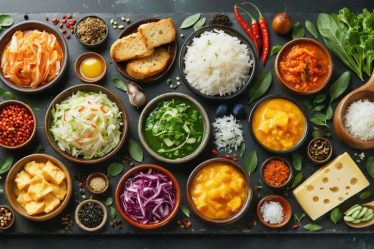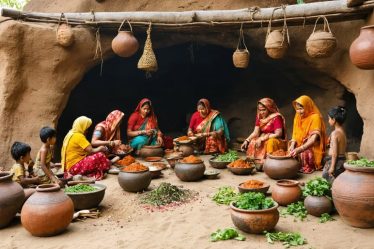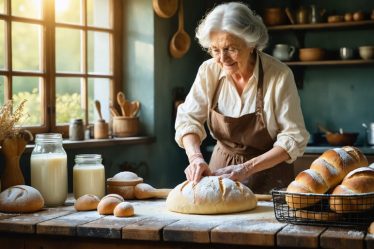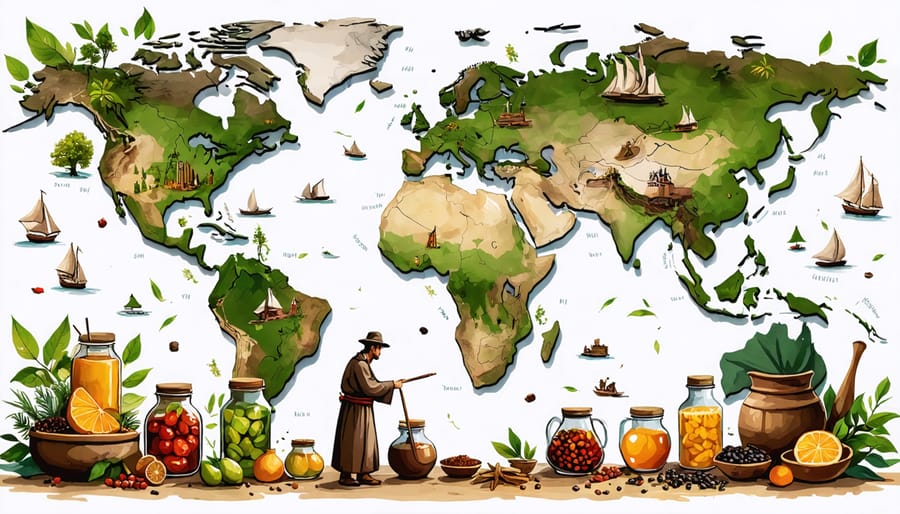
Traditional cultures ripple across continents through the timeless dance of human connection, weaving together stories, flavors, and wisdom that have shaped societies for millennia. From the bustling ancient trade routes of the Silk Road to today’s digital highways, the ways traditional knowledge spreads between communities reveal fascinating patterns of human interaction and adaptation.
Picture a grandmother teaching her time-honored recipes to curious neighbors, or artisans sharing centuries-old techniques at local markets – these intimate exchanges represent the heartbeat of cultural diffusion. As someone who’s witnessed firsthand how my own family’s traditional practices have gradually influenced our diverse neighborhood, I’m continually amazed by how naturally cultural elements flow between communities.
The beauty of cultural diffusion lies in its organic, multi-layered nature. Whether through marriage between different cultural groups, merchant travelers sharing stories alongside their wares, or immigrants bringing their heritage to new shores, traditional practices have always found ways to transcend geographical boundaries. Today, these age-old patterns of cultural exchange continue to evolve, enhanced by modern technology while remaining rooted in the fundamental human desire to connect and share our most precious traditions.
This journey through the pathways of cultural diffusion not only helps us understand how traditions spread but also reveals the remarkable adaptability and resilience of human culture itself.
The Global Kitchen Connection
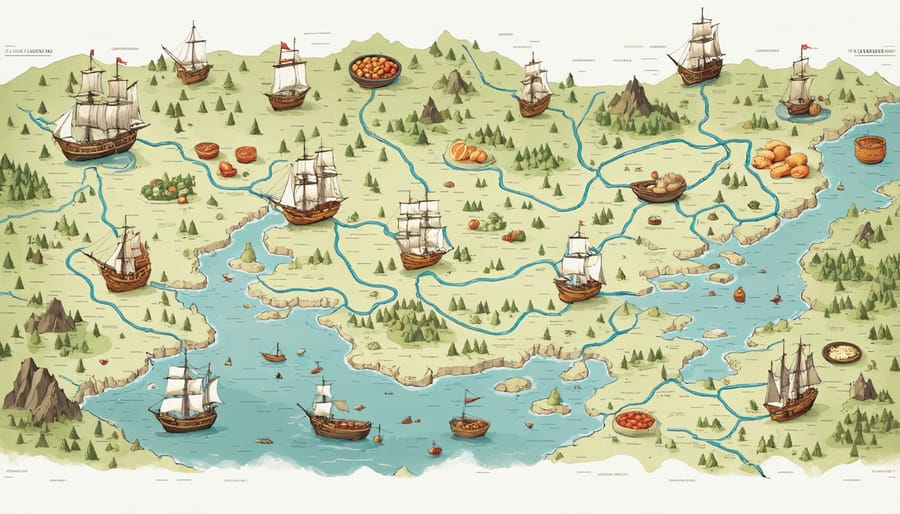
Ancient Trade Routes
Ancient trade routes were more than just pathways for merchants – they were the superhighways of cultural exchange, especially when it came to food preservation techniques. As someone who’s always been fascinated by food’s historical influence on culture, I find it amazing how these routes shaped our culinary heritage.
The legendary Silk Road, stretching from China to the Mediterranean, wasn’t just about silk and spices – it was a conduit for sharing preservation methods like salt-curing and fermentation. Imagine caravans carrying not only goods but also the knowledge of how to keep food fresh across vast distances!
Maritime routes played an equally important role. The spice trade routes connecting Southeast Asia to Europe introduced new preservation techniques like smoking and pickling to different regions. These methods weren’t just practical – they became integral parts of local food cultures.
Desert trade routes across North Africa and the Middle East shared techniques for preserving fruits through drying and candying, while northern routes taught communities about snow and ice storage. Each pathway contributed to a rich tapestry of preservation knowledge that we still benefit from today.
Cultural Migrations
Throughout history, immigrant communities have been the driving force behind the spread of traditional food preservation techniques across continents. When families moved to new lands, they brought not just their belongings but their cherished cultural practices and food wisdom. Think of the Italian immigrants who introduced their tomato-preserving methods to America in the late 1800s, transforming local food culture with their sauce-making traditions.
These preservation techniques often evolved as immigrant communities adapted to new ingredients and climates. For instance, Korean families settling in the American Midwest modified their kimchi recipes using local cabbage varieties, while maintaining the essence of their fermentation practices. Similarly, Jewish communities across Europe and later in America shared their pickling expertise, contributing to the diverse pickle culture we enjoy today.
What’s particularly fascinating is how these techniques were preserved through community gatherings and shared kitchens. Immigrant women often gathered to prepare preserved foods together, creating both sustenance and social bonds. These collective cooking sessions became a way to maintain cultural identity while building bridges with their new neighbors, who often adopted and adapted these preservation methods for their own use.
Family Traditions That Travel
Generational Knowledge Transfer
In many traditional households, the art of food preservation is more than just a practical skill – it’s a cherished ritual that strengthens our cultural identity through food traditions. I remember watching my grandmother pickle vegetables, her hands moving with practiced precision as she shared stories of how her mother taught her these same techniques decades ago.
This passing down of knowledge typically happens in intimate family settings, often in the kitchen where multiple generations gather. Children learn by observing and participating, starting with simple tasks like washing vegetables or preparing jars, gradually taking on more complex responsibilities as they grow older. These hands-on experiences create lasting memories and ensure traditional methods survive.
What makes this knowledge transfer particularly special is how it adapts to each generation while maintaining its core essence. Today’s preservers might use modern kitchen tools alongside traditional techniques, creating a beautiful blend of old and new. Family recipes become living documents, with each generation adding their own notes and adaptations while respecting the fundamental principles.
The emotional connection formed during these teaching moments goes beyond just learning preservation techniques. It’s about understanding the why behind each step, hearing family stories, and feeling connected to a longer chain of cultural heritage. This personal touch ensures that traditional preservation methods remain relevant and meaningful in modern kitchens.
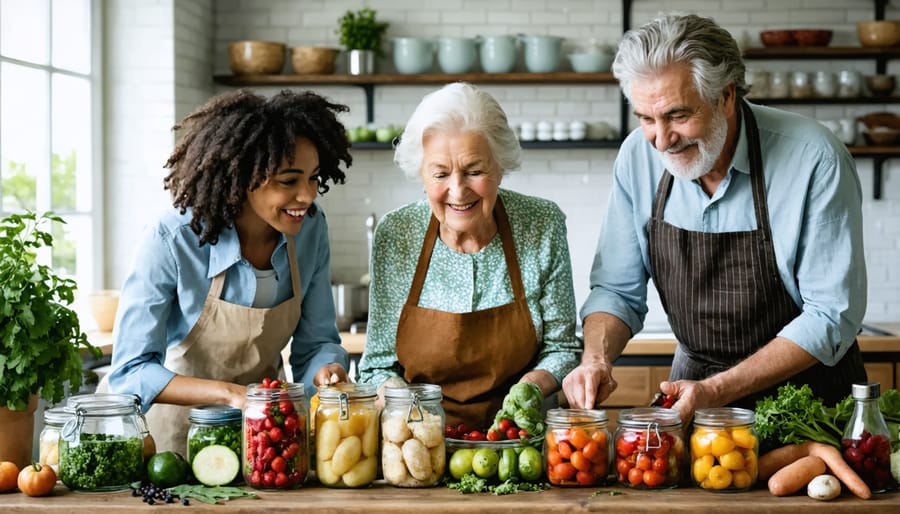
Modern Family Adaptations
Today’s busy families are finding creative ways to preserve their cultural cooking traditions while adapting to modern lifestyles. What’s fascinating is how these adaptations blend convenience with heritage, making it easier to maintain cultural connections in our fast-paced world.
Many families are incorporating smart technology to streamline traditional processes. For instance, programmable slow cookers now replace day-long stovetop simmering, while maintaining the same tender results our grandmothers achieved. Electric fermentation crocks with temperature controls make it simpler to carry on traditional pickling and preservation methods with less monitoring.
Social media and video calls have also revolutionized how we learn and share traditional techniques. Imagine cooking alongside your grandmother virtually, as she guides you through her secret family recipes from across the country. These digital connections help preserve and pass down cultural knowledge that might otherwise be lost.
Modern families are also embracing mindful cooking practices that honor traditional methods while fitting into contemporary schedules. Weekend batch cooking sessions become family traditions themselves, where multiple generations gather to prepare and preserve foods together, creating new memories while maintaining old customs.
Storage solutions have evolved too, with vacuum sealers and specialized containers helping preserve traditional foods longer while taking up less space in modern kitchens. These innovations make it practical to continue heritage cooking practices in today’s homes.
Digital Age Preservation
Social Media Impact
Social media has revolutionized how we share and learn about traditional preservation techniques, creating virtual bridges between cultures that were once separated by vast distances. Instagram and TikTok, in particular, have become vibrant hubs where food preservation enthusiasts from different corners of the world connect and exchange ancestral wisdom.
I recently discovered a Japanese grandmother’s viral TikTok series showing her family’s traditional tsukemono (pickled vegetables) methods, which has inspired thousands of viewers worldwide to try these techniques in their own kitchens. These platforms make centuries-old knowledge accessible and relatable, often through quick, engaging videos that break down complex processes into manageable steps.
What’s particularly heartwarming is how these digital spaces foster cultural appreciation and understanding. You’ll find comments sections filled with people sharing their own family’s preservation methods, creating beautiful cross-cultural dialogues. Food preservation influencers frequently collaborate across borders, combining techniques from different traditions to create innovative hybrid methods.
Through hashtags like #traditionalpreservation and #fermentation, communities of preservers connect globally, ensuring these time-honored practices continue to evolve and adapt for future generations. It’s amazing to see how a simple smartphone video can help preserve and spread cultural knowledge that might otherwise be lost to time.
Online Communities
In today’s digital age, food preservation enthusiasts have created vibrant online communities where traditional knowledge flows freely across borders. Social media platforms like Instagram and Facebook host countless groups dedicated to sharing ancestral preservation methods, with members exchanging tips, troubleshooting problems, and celebrating successes together. These virtual spaces have become modern-day gathering places where grandma’s recipes meet innovative techniques.
I’ve found some of my favorite preservation methods through these online communities, where home cooks from different cultures eagerly share their family traditions. Whether it’s learning about Korean kimchi-making techniques from a group member in Seoul or discovering Italian sun-dried tomato secrets from a nonna in Tuscany, these platforms make cultural exchange instantaneous and accessible.
YouTube channels and food blogs have also become instrumental in preserving and spreading traditional knowledge. Content creators often share detailed tutorials, combining age-old wisdom with modern food safety guidelines. What’s particularly heartwarming is seeing how these online spaces foster cross-cultural appreciation, with members actively seeking to understand and respect the cultural significance behind various preservation methods.
Pinterest boards and recipe-sharing websites serve as digital archives, ensuring traditional preservation techniques aren’t lost to time but rather adapted and embraced by new generations of food enthusiasts.
Cross-Cultural Innovation
Fusion Preservation
As cultures connect and share their wisdom, fascinating preservation combinations emerge that blend the best of different traditions. I’ve been particularly amazed by how Korean kimchi-making techniques have influenced modern American pickling, creating exciting fusion versions that combine Eastern fermentation with Western ingredients like Brussels sprouts or cauliflower.
Another beautiful example is the marriage of Mediterranean olive curing with Mexican chile preservation. Many home cooks now create spicy marinated olives using traditional Greek brining methods while incorporating dried Mexican chiles and epazote, resulting in a cross-cultural delicacy that honors both traditions.
In my community cooking classes, I’ve seen Japanese umeboshi (pickled plum) techniques being adapted for preserving local fruits, while Indian spice blends add complex flavors to European-style jams. This fusion approach not only creates exciting new flavors but also helps preserve traditional methods by making them relevant to modern tastes.
The combination of Chinese tea smoking with Nordic cold smoking has given rise to innovative preservation methods for fish and meat, while Middle Eastern date preservation techniques are being combined with French confectionery practices to create unique preserved fruits.
These fusion preservation methods show how cultural exchange enriches our culinary heritage while creating something entirely new and exciting for future generations to enjoy and build upon.

Modern Applications
In today’s interconnected world, traditional preservation methods are finding new life through modern channels. Social media platforms like Instagram and Pinterest have become virtual marketplaces where age-old techniques spread across continents within seconds. Food bloggers and home cooks regularly share their grandmothers’ recipes for kimchi, pickled vegetables, and preserved lemons, creating a digital bridge between cultures.
Cooking shows and streaming platforms have also revolutionized how we learn about traditional food preservation. When a celebrity chef demonstrates an ancient fermentation technique from rural Japan, millions of viewers worldwide can instantly adopt these practices in their own kitchens. This digital diffusion has led to fascinating fusion experiments, like Korean-Mexican kimchi tacos or Indian-spiced sauerkraut.
Food festivals and farmers’ markets have become modern-day trading posts where traditional preservation techniques are shared face-to-face. Here, local artisans often demonstrate their cultural methods, passing on knowledge that might otherwise be lost. Similarly, cooking classes and workshops have adapted to include both in-person and virtual options, making traditional wisdom more accessible than ever.
The rise of sustainability movements has also sparked renewed interest in traditional preservation methods. As more people seek ways to reduce food waste and eat seasonally, these time-tested techniques are being embraced by a new generation of environmentally conscious cooks, proving that ancient wisdom can offer solutions to modern challenges.
The Future of Food Preservation
In a wonderful fusion of old and new, traditional preservation methods are experiencing a remarkable renaissance in modern sustainable food practices. I’ve noticed more and more home cooks in my community embracing techniques like fermentation and dehydration, skills that our ancestors perfected over generations.
What’s truly exciting is how these time-tested methods are being adapted for contemporary kitchens. For instance, traditional Korean kimchi-making techniques are now being applied to local vegetables in countries worldwide, creating unique fusion preserves that honor both innovation and tradition.
Social media has become a vibrant space where preservation enthusiasts share their experiments with ancient techniques. Just last week, I joined a virtual workshop where a Japanese grandmother taught participants her family’s traditional tsukemono (pickled vegetable) recipe, connecting preservationists across continents.
Food technology companies are also taking notes from traditional wisdom. They’re developing smart storage solutions inspired by age-old clay pot preservation methods and creating modern fermentation vessels based on ancient designs. These innovations make it easier for busy families to incorporate traditional preservation techniques into their daily routines while maintaining the essence of these time-honored practices.
This beautiful marriage of old and new isn’t just about keeping food fresh – it’s about preserving cultural knowledge and making it accessible to future generations.
As we wrap up our journey through traditional food preservation methods, it’s clear that these time-honored techniques are more than just ways to keep food fresh – they’re precious threads in the fabric of our cultural heritage. In my own kitchen, I’ve found that practicing these methods connects me not just to my grandmother’s wisdom, but to a global community of food preservers who have passed down their knowledge through generations.
These traditional preservation techniques are invaluable not only for their practical benefits but also for the stories they tell about human ingenuity and survival. By sharing and practicing these methods, we keep alive the cultural wisdom that has sustained communities for centuries. Whether it’s fermenting kimchi, dry-aging meats, or preserving fruits in honey, each technique carries with it a piece of human history worth protecting.
In today’s interconnected world, we have an unprecedented opportunity to both preserve and share these methods across cultures. By embracing and documenting these traditions while adapting them to modern kitchens, we ensure that future generations can continue to benefit from this collective wisdom. Let’s celebrate and protect these preservation methods as the cultural treasures they truly are.

